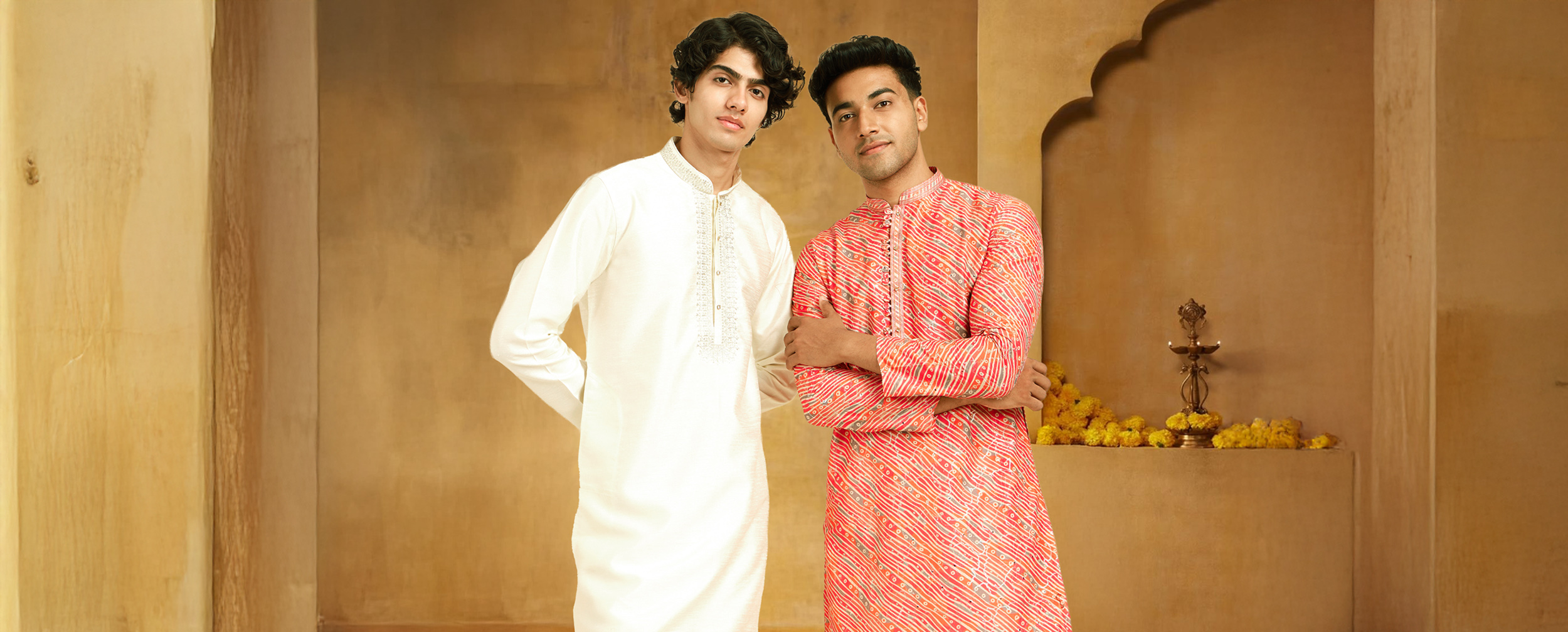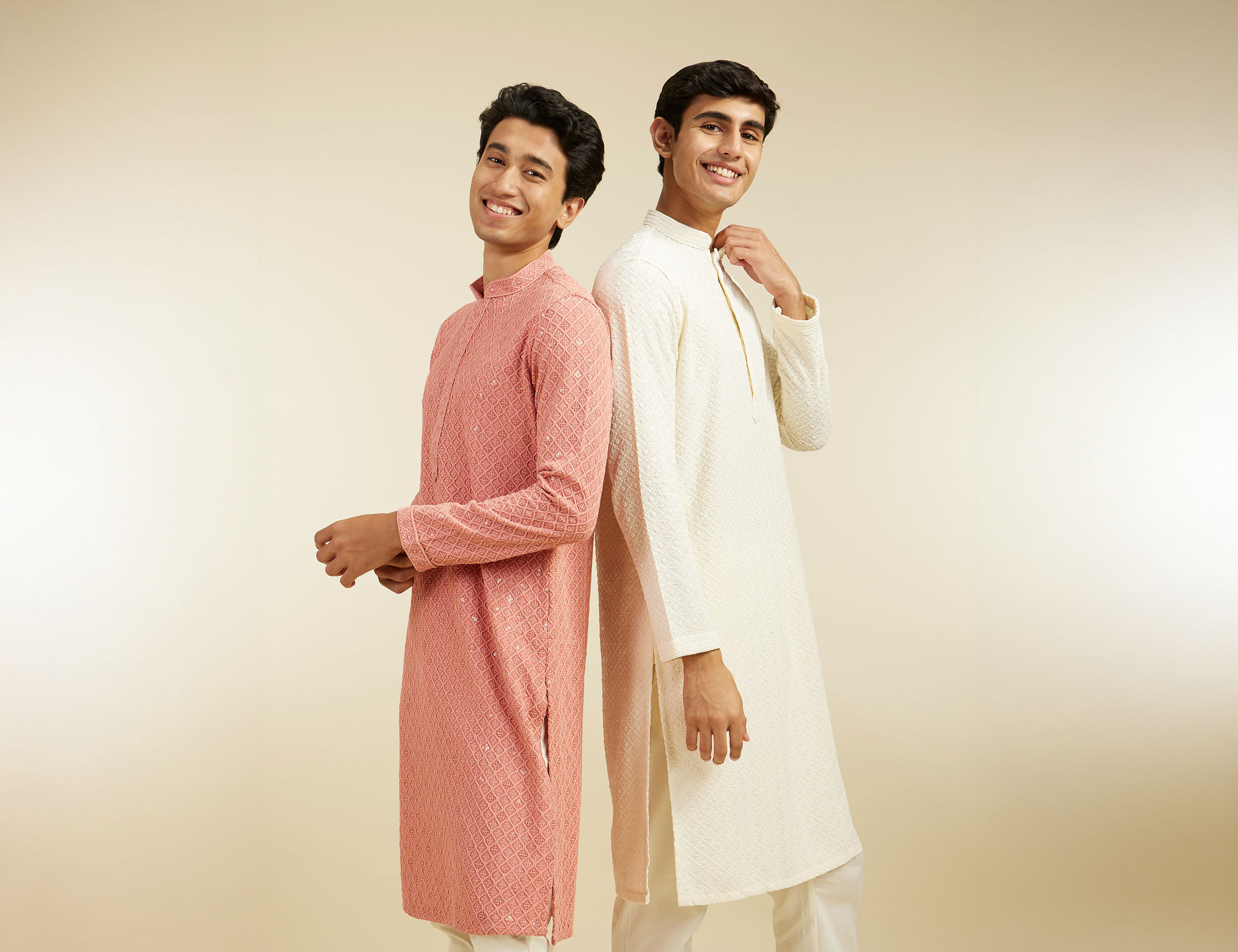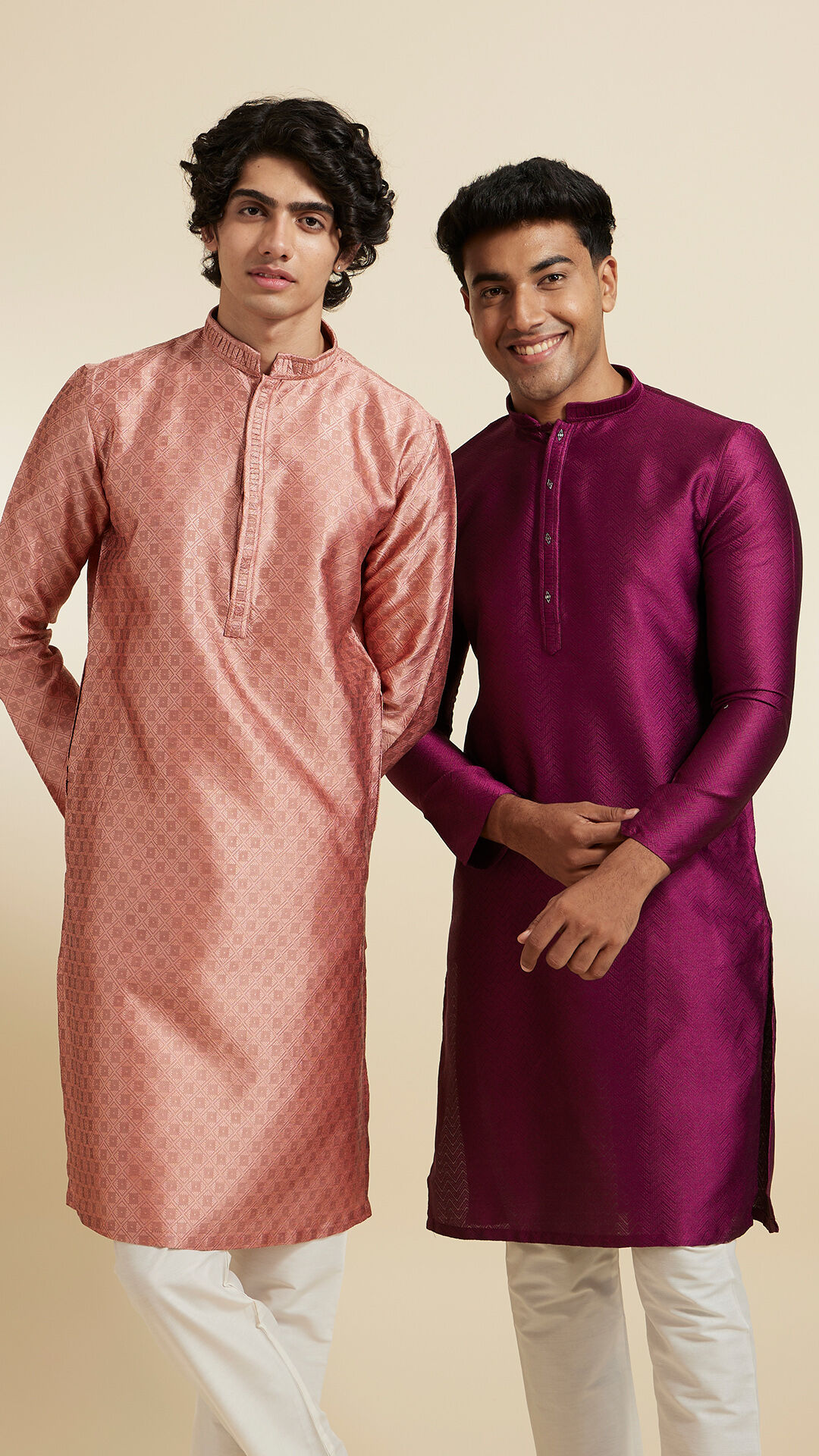STORIES BY DIWAS

Lifestyle
The Durga Puja Significance of Red and White: Colours that Define the Festival
Date 10 September 2025 Reading time: 7-10 mins
Why are Red and White Considered as Salient Colours for Durga Puja
The moment Durga Puja is mentioned, we think of grand pandals, the beats of dhak drums, and the delightful scents and tastes of the festival. But it’s the striking reds and whites that truly define its visual identity. These colours are far from random; they’re central to the Durga Puja significance and carry profound meaning that reflects the essence of the celebration.
In this blog, we’ll explore the deeper meaning behind these colours in Durga Puja and how they represent the power of Goddess Durga. Plus, we’ll share tips on how you can infuse these colours into your own wardrobe to celebrate the Durga Puja authentically.
The Significance of Durga Puja
Durga Puja is much more than a religious festival; it’s a celebration of maternal power, divine strength, and the victory of good over evil. It commemorates Goddess Durga’s triumph over the demon Mahishasura, symbolising the restoration of cosmic balance and protection. The festival lasts ten days, with the final five marking key moments of worship, from the arrival of the Goddess to her farewell at Vijaya Dashami.
The Durga Puja significance goes beyond rituals, bringing entire communities together in joyous celebration. Streets and pandals come alive with art, culture, and feasts, while families reunite to honour shared heritage. It’s a powerful reminder of the strength of unity, as symbolised by the gods who combined their powers to create Durga.
The Significance of Durga Puja Colours
The colours aren't just pretty additions to the celebrations; they're meaningful symbols that enhance the spiritual experience of the festival. Each hue carries specific energy and tells a particular story about the Goddess and her divine qualities.
The Durga Puja significance becomes visually apparent through its distinctive colour palette. While numerous colours appear throughout the celebrations, certain ones dominate the visual landscape and carry special meaning. These colours aren't randomly chosen but carefully selected to represent specific attributes of the Goddess and the spiritual essence of the festival.
The importance of Durga Puja colours also relates to how they transform the atmosphere. From the pandals to the homes of devotees, these colours create a visual feast that elevates the mood and signals that this time is special, set apart from ordinary days. They help create an immersive experience that engages all the senses and deepens the connection to the divine feminine energy being celebrated.
Among all the colours of Durga Puja, red and white stand out as particularly significant. They appear consistently throughout the festival's visual elements and carry some of the deepest symbolic meanings. Let's explore why these two colours have become so central to Durga Puja significance.
Why Red and White are Salient Colours for Durga Puja
When it comes to Durga Puja significance, no colours speak louder than red and white. These two hues dominate everything from the Goddess's attire to devotees' clothing choices, creating a visual language that communicates the festival's deepest meanings.
The importance of Durga Puja also becomes tangible through these colours. Red represents Shakti, the active, fierce power that destroys evil and protects the good. White symbolises purity, peace, and spiritual clarity. Together, they embody Durga's complete nature as both warrior and mother, destroyer and protector.
You'll notice these colours everywhere during the festival, in the pandal decorations, in the flowers offered to the Goddess, and especially in Bengali attire. The classic white saree with a bold red border (lal-paar sada saree) is practically the unofficial uniform of Durga Puja for married Bengali women, while men often opt for white kurtas or red kurtas paired with matching bottom wear for men.
The contrast between these colours creates a visual balance that reflects the cosmic balance Durga herself maintains. Just as she balances fierce power with maternal love, the stark contrast between bold red and pristine white creates a visual harmony that feels both energising and calming simultaneously.
Symbolism of Red and White in Durga Puja Significance
The deeper you look, the more you'll discover about the symbolism of red and white in Durga Puja. These colours aren't just aesthetically pleasing, they're packed with cultural and spiritual meaning.
Red in Durga Puja represents several powerful concepts:
- Shakti (Divine Feminine Power): Red symbolises the active, potent energy of the Goddess Durga as Katyayani, the warrior form who defeated the buffalo demon.
- Protection and Courage: The fiery red colour signifies Durga's role as a fierce protector who stands against evil forces.
- Life and Vitality: Red represents blood, which carries life throughout the body, connecting to Durga's life-giving aspect.
- Marriage and Fertility: For married women, red sindoor (vermilion) is applied in the hair parting as a symbol of marital status and the Goddess's blessing.
- Passion and Devotion: The intense colour represents the devotees' passionate worship and love for the Goddess.
White plays a major role in Durga Puja's significance, carrying meanings that are both important and contrasting:
- Purity and Peace: White represents the serene, peaceful aspect of Goddess Durga as Skandamata, the nurturing mother.
- Spiritual Clarity: The colour symbolises a clear, focused mind during worship.
- Truth and Knowledge: White represents satya (truth) and the light of knowledge that dispels ignorance.
- New Beginnings: The pristine colour signifies fresh starts and the cleansing of past negativity.
- Simplicity and Surrender: White clothing worn by devotees represents humble surrender before the divine.
Together, these colours create a perfect balance, just as the Goddess herself balances fierce protection with maternal love. The contrast helps devotees visualise and connect with both aspects of divine feminine energy.
How Red and White Dominate Festive Traditions
The prominence of red and white isn't limited to symbolic meaning; these colours actively shape how people celebrate and experience the importance of Durga Puja. From clothing choices to decorations, these hues create a distinctive festival aesthetic.
In Indian clothing, these colours take centre stage:
- Women wear white sarees with striking red borders (lal-paar sada sarees), symbolising purity adorned with the power of Shakti.
- Men often choose solid kurtas in white or red, paired with comfortable bottom wear for a balanced festival look.
- Children are dressed in red and white outfits to receive the Goddess's special blessing and protection.
For those looking to honour these colours while staying stylish, here are some modern styling tips:
- Choose a comfortable kurta for men in white or red with subtle detailing for a contemporary look.
- Layer a red kurta with a cream or off-white jacket for a sophisticated look.
- Pair a white kurta for men with red accessories like a pocket square or stole to incorporate both sacred colours.
- For a minimalist approach, choose solid kurtas in either white or red rather than busy patterns.
- Complete your look with comfortable bottom wear for men in neutral tones that complement your chosen kurta.
Other Colours of Significance in Durga Puja
While red and white dominate the Durga Puja, other colours also play vital roles in the celebration.
- Yellow symbolises knowledge and happiness, while gold represents prosperity and divine light. Golden skin on Goddess Durga’s idol reflects her radiance, and yellow marigolds are commonly used in offerings.
- Green, symbolising growth and harmony, represents the nurturing aspect of the Goddess, while blue connects to the cosmic divine, often seen in the form of blue lotus flowers.
- Orange blends red’s energy with yellow’s joy, representing enthusiasm and creativity, and is seen in vibrant marigold garlands and decorations.
Their Meanings and Usage in Celebrations
Each of these supplementary colours plays a specific role in enhancing the festival experience and honouring different aspects of Durga Puja significance.
Here's how these additional colours are incorporated into the celebrations:
- Yellow and Gold: Found in the stunning ornaments adorning the Goddess, the golden crown (mukut), and in the yellow sweets (like sandesh) offered during the festival.
- Green: Visible in the decorative banana trees (kola bou) placed beside the Goddess, representing fertility and abundance.
- Blue: Sometimes appears in the backdrop of pandals, representing the cosmic dimensions of the divine feminine.
- Orange: Prominent in marigold garlands draping the pandals and in the vibrant sunset-hued sarees worn during evening aartis.
While these colours enrich the visual experience of Durga Puja significance, they always work alongside the dominant red and white, creating a complete colour story that reflects the multifaceted nature of the Goddess and her celebration.
For those wanting to incorporate these secondary colours into their festival wardrobe, consider these styling tips:
- Add yellow accessories to a white outfit for a subtle nod to knowledge and prosperity.
- Incorporate green elements through emerald accessories paired with your kurta for men.
- Choose outfits with golden embroidery on red or white bases to honour the palette while adding festive sparkle.
- Layer blue stoles or dupattas over solid kurtas for a modern interpretation of the festival's colour symbolism.
Durga Puja Significance Of Red and White: Final Thoughts
As you prepare for Durga Puja celebrations, consider how you might incorporate these meaningful colours into your festival experience. Whether through wearing a classic white kurta for men or a bold red kurta, decorating your home with these auspicious hues, or simply appreciating their presence in the pandals and rituals, connecting with these colours can deepen your experience of the importance of Durga Puja.
So this Durga Puja, as you celebrate the divine feminine and the triumph of good over evil, let the red and white all around you speak to your heart about these timeless truths. And if you're looking for the perfect festival attire that honours these sacred colours, explore Diwas's collection of kurtas for men designed to help you celebrate in style while staying connected to heritage.



